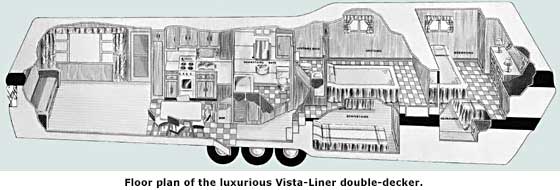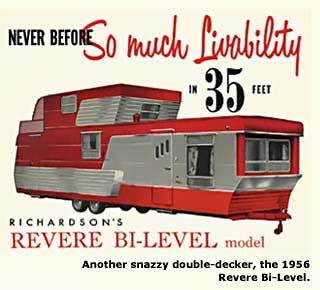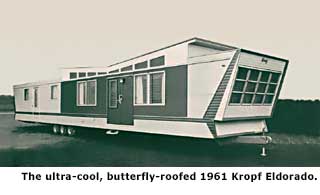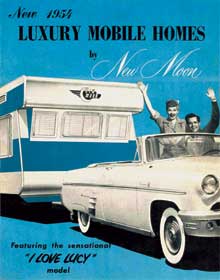On the Road Again: Trailers - Page 4
Of course, the stick-built house owner did have more living space and larger rooms. While that was somewhat of a downside for trailer owners, most certainly didn't feel deprived. After settling into a luxury park, many trailer owners added on large wood or masonry cabanas, generally the full length of their trailers. These additions had everything inside them, including sliding-glass doors, fireplaces—and even wet bars!

Originally, trailers were manufactured in standard eight-foot widths for ease of towing. When ten-foot-wide units were introduced in 1954, they were a big hit not only with mobile home dwellers but also with their designers, one of whom was Raymond Loewy, the well-known industrial designer. The ten-wides, as they were called, did require an over-width permit for relocation, and each state had its own regulations as to how and when they could be moved and the cost involved.
Since manufacturers were obviously limited in width and length, the designers turned their attention to creating ingenious and lavish interiors, including two-story or double-decker models. These two-story trailers featured two bedrooms upstairs, sometimes with an added half-bath. The downstairs had another bedroom with a full bath, an ultra-modern kitchen with wall ovens and other chic appliances, and a comfortable, carpeted living and dining area.

One of the most luxurious double-decker models ever created was the Vista-Liner by Indiana-based Smoker Lumber Company. Literally a land yacht, the Vista-Liner came in two lengths, 45 and 50 feet, and featured four bedrooms, two baths, oak flooring, and various other modern accessories—and sold for a whopping $25,000 FOB! Meanwhile, in Florida, a new three-bedroom, 1.5-bath house on a lot was selling for under $10,000!
Smoker was not the only manufacturer that produced such high-priced wheel estate. Another Indiana company, Kropf, came upout with a ten-wide mobile home called the Eldorado that boasted an actual butterfly roof (ala the Palm Springs Alexanders) with clerestory windows in the living and kitchen areas that compared in design with some of the country's best site-built homes. "Supremacy in regal luxury, styled for lasting beauty," boasted Kropf's ads. The price for this regal beauty ranged from $10-15,000.

Pan American was a well-known West Coast manufacturer that produced mobile homes in the same price range as Kropf, but with the sunny California look of sliding-glass doors, large windows throughout, and central air conditioning.
Two other California manufacturers, Budger and Trailorama, built eight- and ten-wide mobile homes that expanded their widths to 16 and 20 feet wide, respectively, when parked. Decorated in style, from California modern to French provincial, their interiors featured all of the comforts one could imagine: fireplaces, ultra-gourmet kitchens, and up to three bedrooms and three baths with dressing rooms. Their prices? $10-20,000.
Who bought these trailers? Who could afford them? Generally they caught the eye—and pocketbooks—of retired doctors, lawyers, businessmen, and others in the golden '50s who appreciated not only the regal design of the mobile home but also the plush country-club-like lifestyle of the upper-end mobile home park.
Trailer trash? Not hardly!
Powered by Lucy

TV stars Lucille Ball and Desi Arnaz brought respectability, fanfare, and a surge of sales to trailers and their industry with the 1954 comedy film 'The Long, Long Trailer,' directed by Vincente Minnelli. The couple's adventures were centered around their new vacation home on wheels—a streamlined, yellow-and-white, 36-foot 1953 New Moon trailer from the Redman Trailer Company.
The excitement that surrounded the 'I love Lucy' trailer was the best thing that could have happened to any trailer manufacturer in the 1950s. What's more, trailer folks (as well as parks) were portrayed as nice and pleasant—never as 'cheap.'
'The Long, Long Trailer' became MGM's bestgrossing comedy up to that point and transformed Redman overnight from a small regional outfit (building one or two trailers a day) into one of the nation's largest mobile home manufacturers (with five or six factories, producing hundreds each day).
- « first
- ‹ previous
- 1
- 2
- 3
- 4




